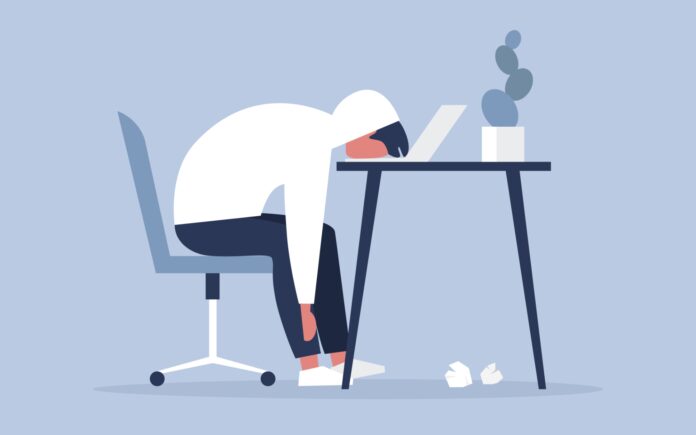
Professional burnout syndrome is usually described as “a syndrome that develops against the background of chronic stress and leads to exhaustion of emotional-energetic and personal resources of a working person”. In other words, it is a condition in which the worker suffers from constant stress, exhaustion, fatigue, and even impaired health on a physical level.
This syndrome was included by WHO in ICD-11 (International Classification of Diseases). Although occupational burnout is not considered to be a medical condition, its impact on a person’s personality is extremely strong.
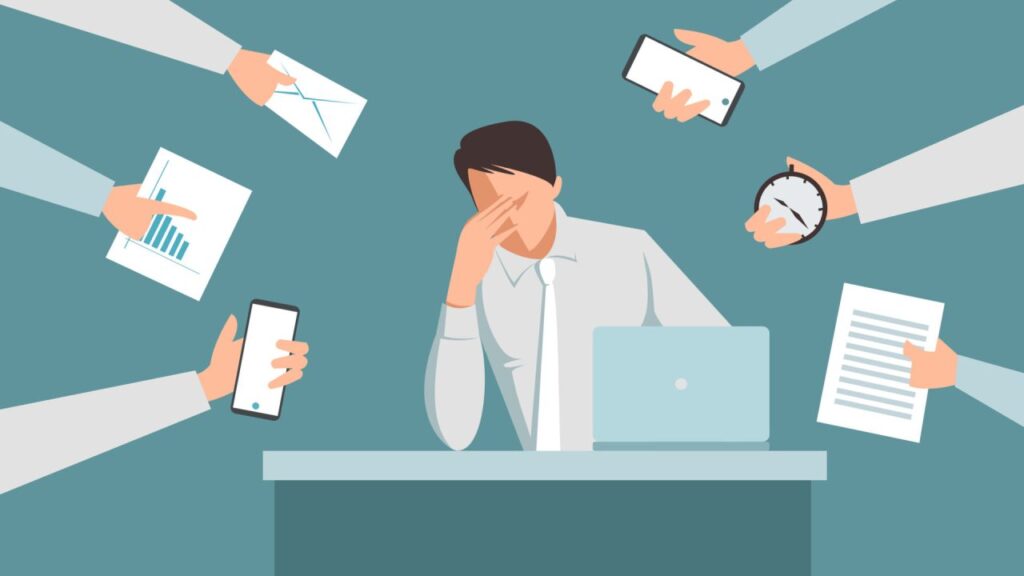
It is commonly believed that representatives of the so-called “budgetary” spheres: teachers, doctors, civil servants, and so on, are susceptible to professional burnout syndrome. Professional burnout can occur because of excessive communication with people, constant pressure from the management, the feeling of “duty”.
According to Writemyessay.nyc there are more researches that confirm the development of professional burnout in teachers and doctors. There is no scientific data among marketers or illustrators, and the professions themselves are much younger, so it’s hard to find the real percentage of workers in the digital sphere with such problems.
Burnout statistics
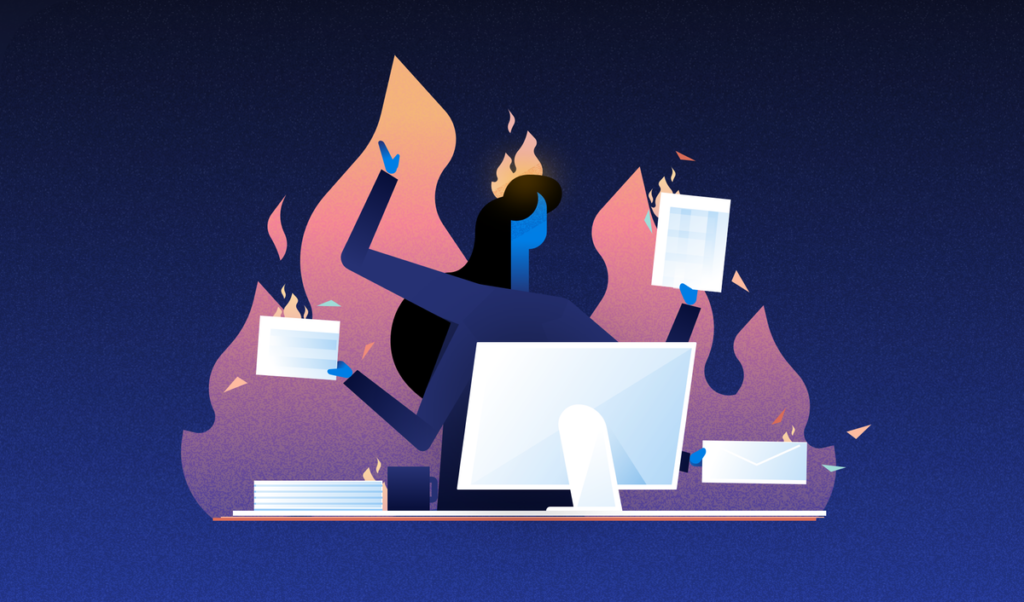
The Gallup Institute conducted a survey of 7,500 full-time workers. 21% of those surveyed confirmed that they experience a constant feeling of burnout, while another 48% admitted that they are exposed to it from time to time.
For example, in the USA, the most “burned out” professions are social services and emergency workers (firemen, police, ambulance service).
However, they are not the only ones who suffer from burnout: a Comparably company survey revealed that 54% of workers in the design sphere suffer from burnout syndrome. Marketing specialists suffer 57%, and HR – all 69%.
If we talk about surveys without a specific sample, a manual survey of 44 people showed that 9 of them are already on the verge of full burnout, another 5 are close to it, 20 are in an average state and only 4 feel fine.
How to detect professional burnout on your own?
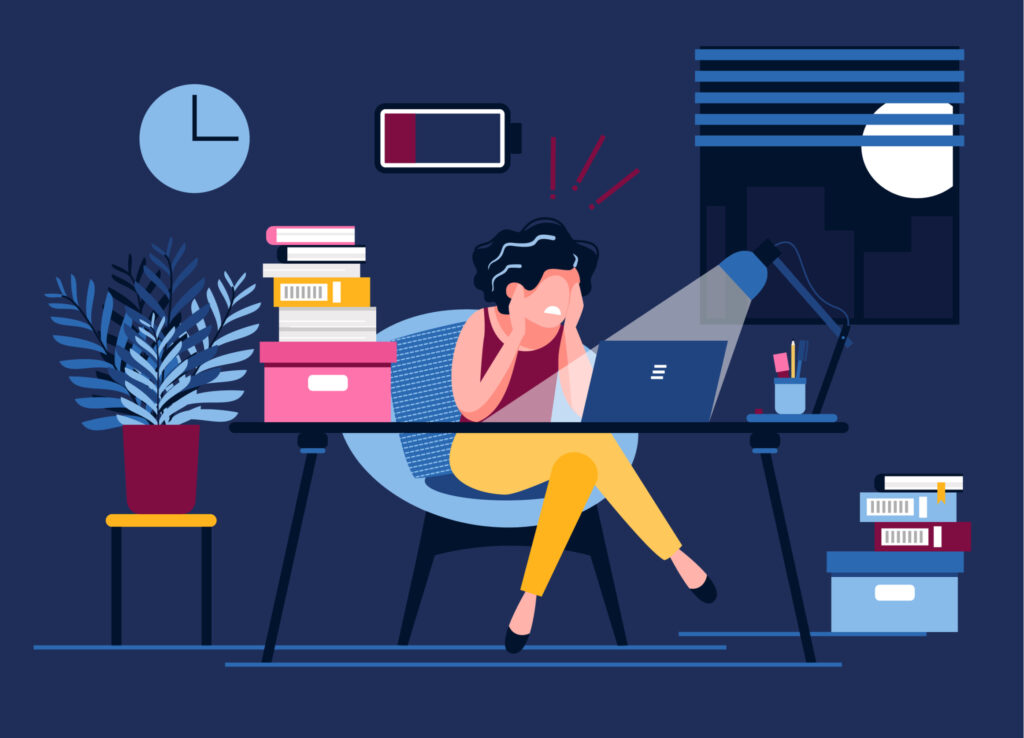
Is it possible to detect symptoms and diagnose a professional burnout on your own without psychologist’s interviews and tests? Only a psychotherapist can give a full picture – such symptoms are often seen with other diseases, but to decide whether to go to him or not, you can analyze yourself according to the following parameters:
- a feeling of constant fatigue: not only after a hard day’s work, but even in the morning after waking up;
- frequent headaches, gastrointestinal disorders;
- shortness of breath and other respiratory disorders in the moment of overexertion and stress;
- desire to sleep regardless of the time of day;
- impaired hearing, vision, or tactile sensations;
- indifference, boredom, or passivity toward work;
- feelings of anxiety, when it seems that something is constantly going wrong as it should;
- feeling of hopelessness: no matter what you do, it is still useless;
- feeling that work has become harder than before, unwillingness to cope with new tasks, lack of interest in projects.
These are the most common symptoms of professional burnout. A person in a state of burnout most often experiences rejection of his/her activity, loss of motivation for it, desire to go on vacation as soon as possible, and preferably not to return from it. Though a temporary rest can help, but only as a preventive measure.
How to cope with burnout?
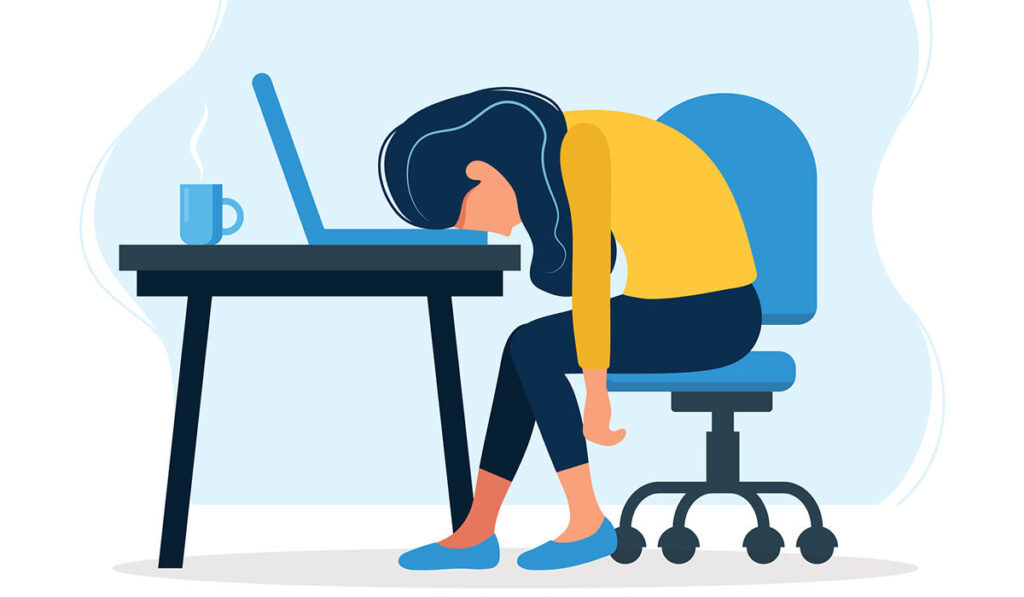
If you have already found yourself in a state of professional burnout, then, unfortunately, there are not many ways to get out of it on your own. The body has already caged itself, the brain cannot refuse the endless processing of information about negative processes, and relaxing it forcibly will not be easy.
But if for one reason or another you cannot go to a specialist right now, you can try to improve your condition for a period before going to the doctor.
How to do it?
Digital detox.
Give up gadgets and the Internet for a certain period. You can do it in the evenings before going to bed, or arrange a detox for a few days or even a week – depending on how much you are tired of socializing and flipping through the feed.
When we forcibly remove ourselves from social media, we stop focusing on the problems of the people around us: it doesn’t matter if it’s news or a message from a friend. At times like this, it’s better to focus on yourself and your condition than to spray you’re already running out of energy on others.
Meditation
Also one of the most frequent tips: controlling your breathing and maximum immersion in your inner self can work wonders. We can recommend the apps Calm (iOS and Android) and Headspace (iOS and Android), as well as a cool meditation podcast. Also, don’t forget that you can do both meditation and just proper breathing (it’s often underestimated). For pranic breathing, we can recommend Prana Breath (Android) and Universal Breathing (iOS).
Sleep
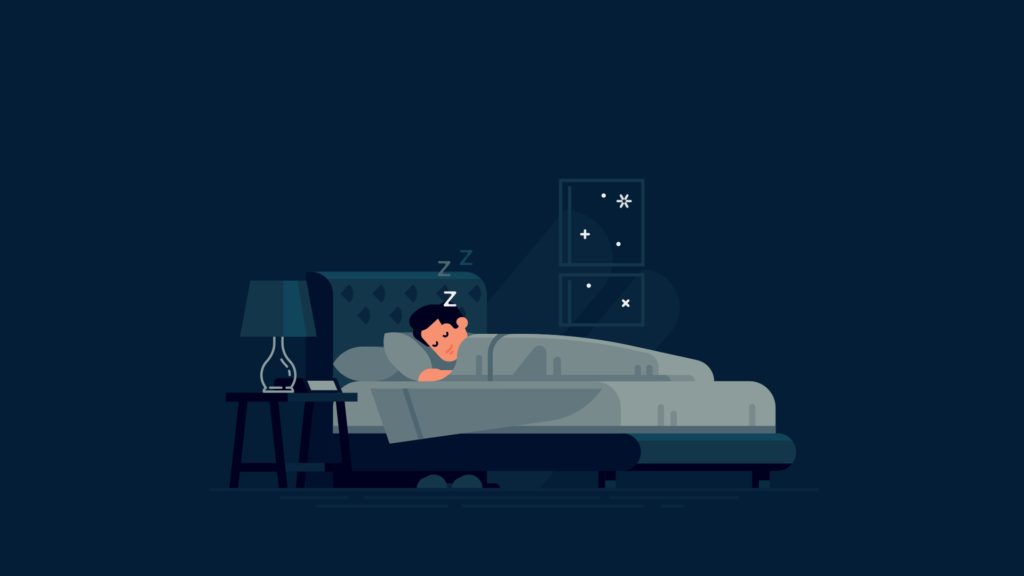
Problems with sleep are one of the symptoms of burnout, which is the most difficult to fight, but you can try to reduce stress levels: take relaxing baths, make sleep masks with lavender, drink herbal teas in the evening.
Physical activity
It’s not just about full-fledged exercise: it can be evening walks, five-minute stretches at home on the mat, dancing. One of the most frequently recommended activities is swimming. During the activity, you need to focus as much as possible on the tension of the muscles, their movement, and gradual relaxation.
Workplace changes
We are not talking about a change of work (although in some cases it is necessary too), but about bringing something new into the workplace. Fresh flowers, pictures of your favorite people, mood boards – anything that is allowed by the boss (it’s even easier for freelancers) and that makes you a little happier.
Burnout prevention
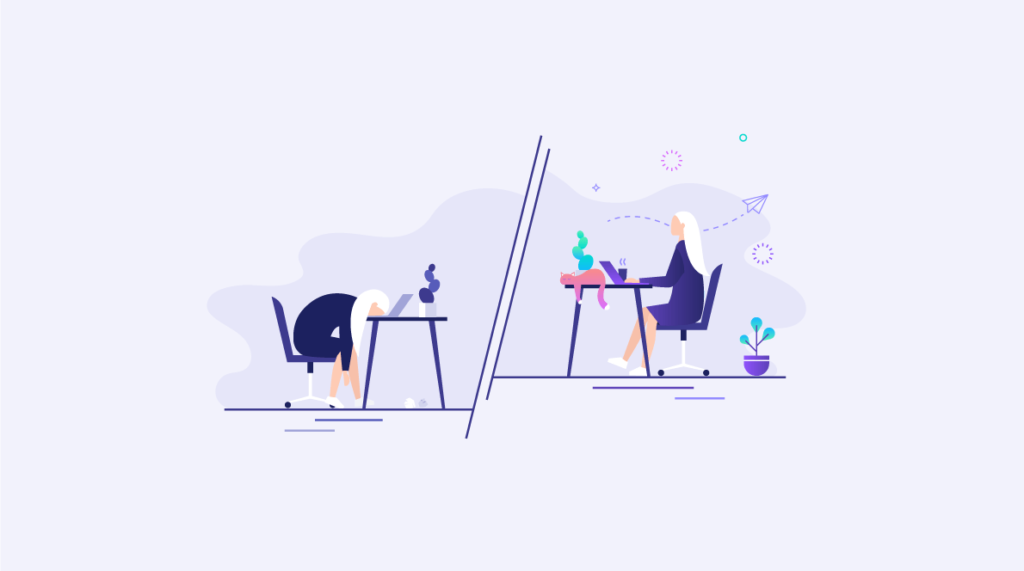
Since any disease is much harder to cure than to prevent its occurrence, it is worth thinking about the prevention of professional burnout now. We may not distinguish fatigue from an approaching syndrome, be sure that it is a temporary period, and sometimes even blame ourselves for such an attitude to work. It seems that we are something different, wrong, weak and lazy. In fact, even such trivial signs can be signs of burnout, so it is important to build a healthy attitude to work now.
Leave work at work
As strange as it may sound, many people even eat dinner in their work clothes after a day at work. It’s important to shed your “uniform,” take a shower or bath before dinner, wash off all your makeup, and only then sit down at the table and socialize with your family. Otherwise, you run the risk of literally dragging your work state behind you and not moving into “home” mode.
Use planners
Planning is the key not only to a productive and purposeful workflow but also to your peace of mind. By being sure that all the things you have planned for today are completed at work, you can devote yourself to the comfort of home with a clean mind. Anything beyond specific tasks should not break into the current day’s clear plan. Even force majeure tasks can be intelligently allocated without compromising yourself or your team. Pay special attention to Bullet Journal or Notion.
Get your rest on time
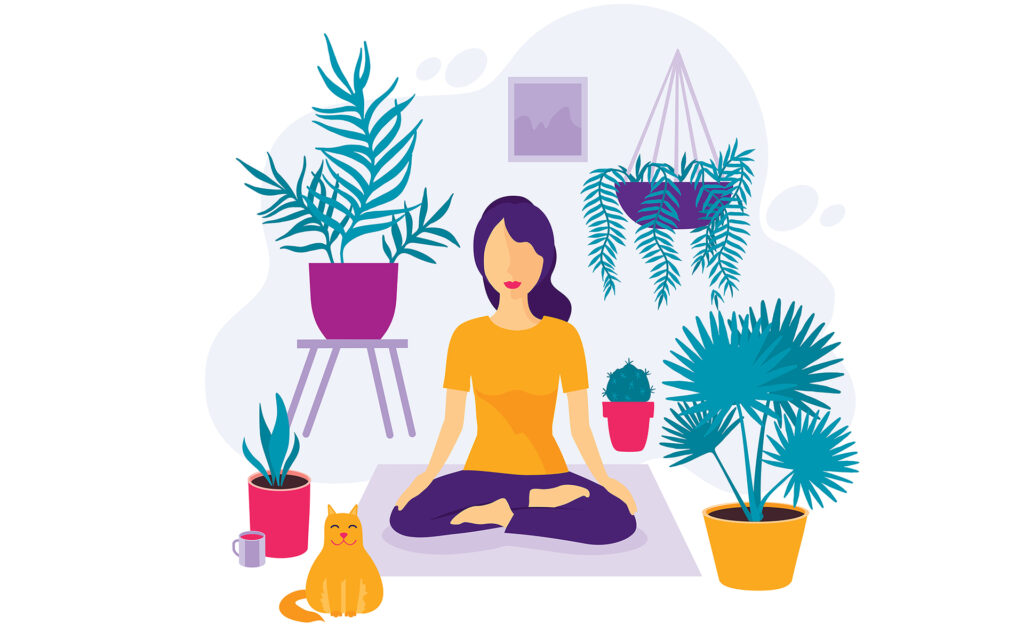
Horseradish mode hasn’t saved anyone’s project yet. Working 24/7, in fact, kills deadlines and the worker himself, plunges him into a state of panic and affects the physical processes of the body. If you are a freelancer, the Pomodoro principle may suit you: a 5-minute break every 20-30 minutes, after 4 long sessions – a break of 20 minutes. In the office besides lunch give 5 minutes every hour for a little relaxation: light exercises for the neck and eyes, thumbing through the same daybook, a glass of water or herbal tea.
Don’t forget about the world around you
Your life will never consist of 100% work. It has family, friends, fresh air, entertainment, and hobbies. Make a list of possible pastimes that have nothing to do with work: going to the theater, having a coffee break with a friend or girlfriend, painting or doing crafts, reading, watching movies and TV shows.
Reduce the importance
A logical extension of the previous point. Work is not the cornerstone of personality, your family and friends don’t love you for it, your blood circulates not because of projects. Sure, most of us work provides food and a roof over our heads, but putting it at the center of our thoughts simply won’t make you more money. Take it with due care and seriousness, but remember your physical and mental health first and foremost.








